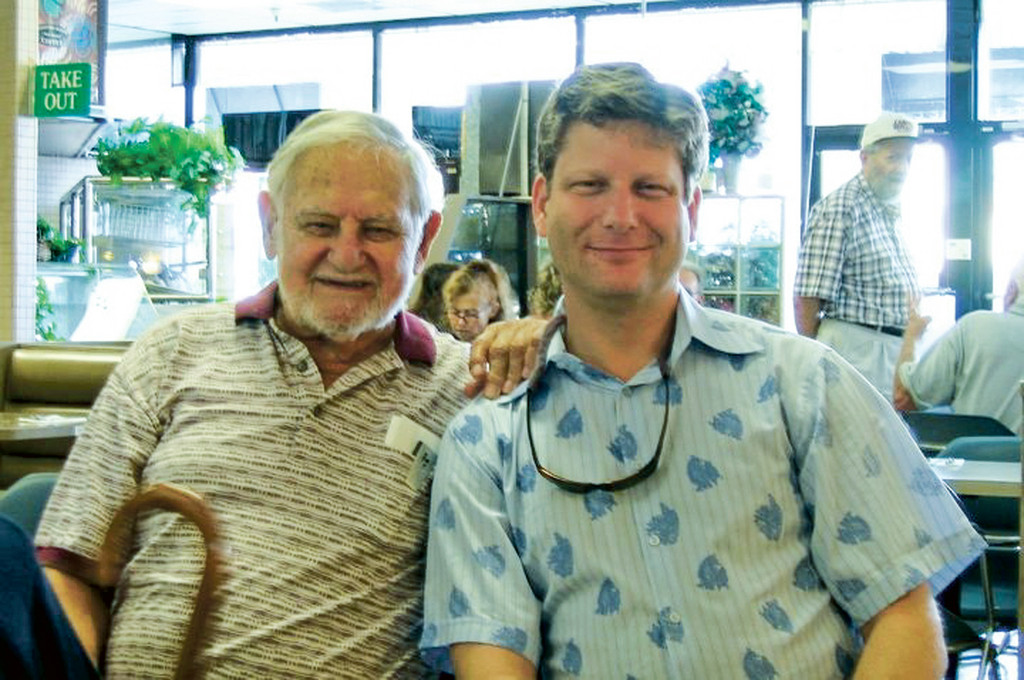Schectman, first NBA scorer, last original NY Knick
On Nov. 1, 1946, Oscar “Ossie” Schectman scored on a fast-break layup in the opening moments of the first game in the history of the Basketball Association of America, as the National Basketball Association (NBA) was known prior to 1949. But until the 1980s, Schectman didn’t make much of what would later be considered a historic basket.
“In 1982, the NBA came to me and said ‘Look, you scored the opening basket [in league history]. I said, ‘Great, I never thought about it. I know I had a fairly good night that night.’ From that time on I’ve gotten some publicity about it and it’s kept my name alive,” Schectman says in “The First Basket,” a 2008 Jewish basketball documentary whose name was inspired by Schectman’s field goal.
Before he passed away on July 30 at age 94, Schectman was the oldest living New York Knick, a designation now held by 90-year old Dick Shrider, the Ohio product who played just four games for the team in 1948-49. Schectman’s NBA career lasted 54 games over the span of one season, 1946-47, during which he averaged 8.1 points and 2.0 assists per game. In the first game in league history, he scored 11 points as the Knicks won on the road against the Toronto Huskies, 68-66. His death severed the last living thread between the Knicks and their inaugural team.
“Ironically, Schectman’s passing came exactly 67 years to the day after he signed his first Knicks contract on July 30, 1946. Few held a place in Knicks history more treasured and more unique. In so many ways, he was the last original [Knick],” Dennis D’Agostino, team historian for the Knicks, told JNS.org.
For many Jews like Schectman, childhood was about little else but basketball—particularly for Jews whose parents came to America from Europe and settled in the lower east side of Manhattan. Narrated by Peter Riegert, the film named after Schectman’s historic field goal begins with the following statement: “Basketball. Before going global it rebounded off of a few Jewish neighborhoods. Who knew?”
“Ossie was one of the nicest, most humble guys you could ever meet, and that is my lasting impression [of him],” David Vyorst, executive producer of “The First Basket,” told JNS.org. “He had been in a nursing home for the past several years. He called me when he first checked in and every so often just to let me know how he was doing. It was quite bittersweet.”
Schectman began his playing career at Samuel J. Tilden High School in Brooklyn and later played guard and forward at Long Island University. He was a member of LIU’s undefeated 1939 National Invitation Tournament and National Championship team, and in 1941 he was named a Converse first team All-American.
While industrialization, immigration, and urbanization drastically transformed America at the turn of the 20th century, many Jewish Americans like Schectman saw basketball as an ideal sport since it taught teamwork, cooperation, discipline, and obedience. During the Progressive era, the popularization of basketball among Jewish youths in urban areas primarily occurred both in settlement houses and at communal institutions.
Jews went on to play a significant role in the NBA’s formative years. When Schectman played for the Knicks, the team’s roster sported significant Jewish flavor—his teammates were Sonny Hertzberg, Stan Stutz, Hank Rosenstein, Ralph Kaplowitz, Jake Weber, and Leo “Ace” Gottlieb.
“The two qualities that Jewish players and coaches brought to basketball that made them successful were passion and intelligence,” Peter Horvitz, author of the Big Book of Jewish Sports Heroes, told JNS.org. “Those early players played the game hard and with great aggression. They also honed their skills and used strategy to a degree that other players, perhaps, did not.”
Besides for the Knicks, Schectman played for the Philadelphia SPHAS (South Philadelphia Hebrew Association) from 1942-46, before the formation of the modern NBA. The SPHAS, founded by Eddie Gottlieb, won seven American League championships from 1934 to 1945, including two championships while Schectman was part of the team.
“At that time the American League championship was equivalent to the world championship, as the American League was the highest level of basketball in the U.S., or the world,” Horvitz said.
Over the years, Schectman would become one of basketball’s great ambassadors. In Florida, he anchored the South Florida Basketball Fraternity, a large group of senior citizen hoopsters who met regularly for corned beef and war stories.
“His son called down and told [famed longtime NBA referee] Norm Drucker and the word got around to us,” Stan Diamond, a spokesperson for the fraternity, told JNS.org. “Ossie was the oldest one in our organization and I saw him at the breakfasts and luncheons. On Dec. 17 we’re having a luncheon at the Polo Club in Boca Raton and we’ll be mentioning Ossie. Ossie was a great guy; you couldn’t find a nicer man. We miss him.”
Schectman’s wife’s passing last year triggered his move from his longtime Florida home to suburban Westchester, NY, in order to be near his son and family, D’Agostino said.
Reached at his Florida home, Drucker said Schectman “was a great ballplayer and a close personal friend.”
“He was a year or two older than me. We played ball and then came the war. Then he played for the Knicks,” Drucker told JNS.org.
The very beginning of Schectman’s one-season career for the Knicks would then go on to cement his place in NBA history.
“There were no such things as play-by-play sheets back in those days, no formal documentation, so those first two points [in league history] always carried an air of mystery about them,” D’Agostino said. “But the grainy black-and-white film that survives from that first night in Toronto does seem to bear him out. That’s Ossie, old number 6 in blue and orange, barreling in for two soon after the opening tap.”

 54.0°,
Overcast
54.0°,
Overcast 




